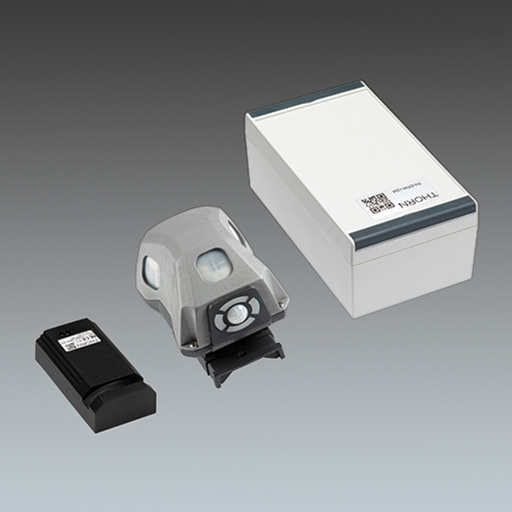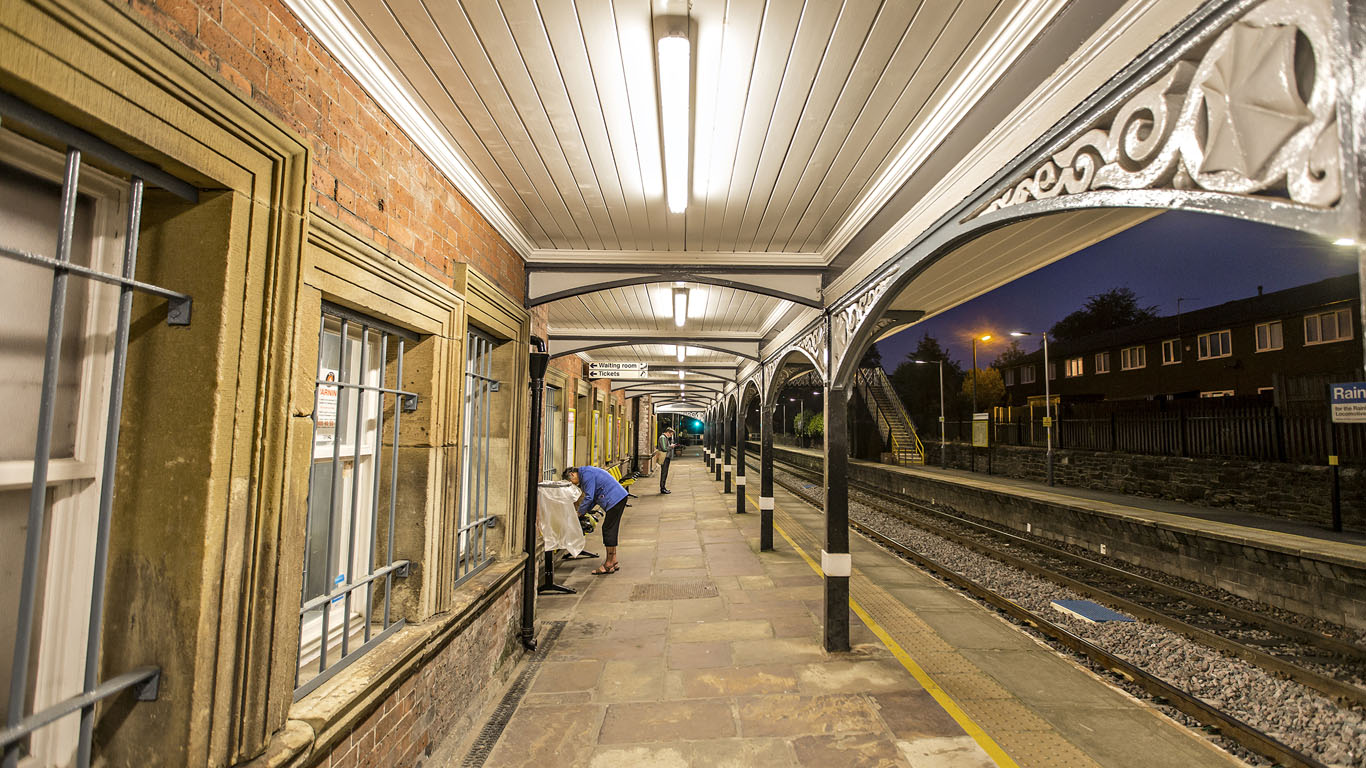TAG | lighting controls
Thorn launches a new scalable Radio Frequency Outdoor Lighting Controls solution.

In a bid to make outdoor lighting controls easier to understand and implement Thorn has released a simple portfolio for managing groups of luminaires or total city applications.
The new radio frequency (RF) based outdoor lighting controls system is designed to provide energy savings and remote data management for energy conscious cities and communities, offering complete application and cost flexibility with sensor-based and non-sensor based RF nodes.
One of the most innovative features includes the “moving light” functionality which programs the light to switch on and then trail cars, bicycles and pedestrians, guaranteeing that light is only activated when needed, reducing waste light and decreasing energy consumption.
To make life simpler and to be future ready RF OLC works on an open protocol to enable operation with other smart city functions and it has been designed with future proofed RF technology; ready for whatever lies ahead.
Visit www.novelenergylighting.com or call us at 0208-540-8287 to discuss your project needs and explore Thorn products
LED fittings · led lighting · lighting controls · Novel Energy Lighting · outdoor lighting · thorn led · thorn lighting · thorn olc · thorn rf
15
LEDs and controls arrive on the line where Stephenson’s Rocket set off
Comments off · Posted by admin in LED
Lux reports: An LED lighting system at Rainhill train station in Lancashire has reduced energy use by more than half and attracted positive feedback from employees and customers. The station, one of 464 managed by Northern Rail, is on the line where Robert Stephenson’s pioneering Rocket successfully completed the first locomotive trials in 1829, so a key consideration for the lighting project was the appeal and structural integrity of the historic site.
More recently, the station’s old lighting system had been vandalised and was no longer providing enough illumination in some areas.
‘We wanted to install LED lighting at Rainhill to show that new technology could be fitted in a building of historic interest, running new beside old without detriment to the structure itself,’ said Euan Hilton, utilities, contracts and data manager at the station’s operator, Northern Rail.
The chosen supplier for the new lights, together with a control system using motion sensors, was UK manufacturer Dexeco Solutions, part of the Dextra Group (which was named Manufacturer of the Year at the2014 Lux Awards).
The installation is a rare example of a rail operator embracing lighting controls and reaping the benefits. In many cases the complexity of controls, combined with fears about safety, has held the industry back from making the most of possible energy savings.
Dexeco used a different product in each of the station’s four areas: Impervia LED columns with infrared motion sensors on platform columns; vandal-resistant Eco Impervia LEDs with the same sensors on the canopy above the platform; MOD LEDs in waiting rooms and offices; and motion-sensing Amenity Plus LEDs in the toilets.
Installation costs were kept down by matching the new LED fittings to existing fittings. Integral sensors in those new fittings meant the light could be controlled without having to install bus wiring or building management system (BMS) controls. Lights in toilets will turn off when nobody is there, and fittings can also respond to daylight and turn off if they’re not needed. A local company, Picow, was responsible for the installation.
Northern Rail has reported a 56 per cent drop in Rainhill’s overall energy since it activated the motion sensors, which ensure the station’s lights only operate at full output when passengers or trains are present. With unoccupied areas lit to minimum safety and security levels, the new system also reduces light pollution.
Hilton said: ‘Customers have already remarked how the station looks and feels so much brighter and that the waiting room is more pleasant to sit in. Our people have also noticed a big change and were surprised how something such as lighting could change their working environment for the better.’
Novel Energy Lighting can assist with your project today, by providing lighting designs, and supply of LED lamps, fittings, and sensors. Call us: 0208-540-8287, or email for more information: sales@novelenergylighting.com
energy efficient lighting · led controls · led lighting · lighting controls · Novel Energy Lighting · rail led · railway lighting · transport lighting
17
Government Aims to Slash Energy Demand for Lighting
Comments off · Posted by admin in LED, LED downlights, LED GU10, LED panels, LED Spots, LED Tubes, Philips LED

Lux Magazine reports: The government is considering ways to slash demand for energy by encouraging homes and businesses to install low-energy lighting and controls.
A consultation on ways to reduce demand for electricity was launched yesterday together with the Energy Bill, and runs until the end of January.
The Department of Energy and Climate Change (DECC) believes that a quarter of the potential energy savings to be made in homes by 2030 could come from getting rid of incandescent lamps, while lighting and controls could account for more than a third of savings in commercial properties and nearly half in the public sector (including streetlighting).
In the residential sector, the major barrier to adopting these technologies is a lack of awareness, the government believes, while in commercial buildings the main problems are the payback period on lighting upgrades and the fact that the person using a building and paying the bills is not always the one with the power to make changes.
The government is considering various financial incentives for energy-efficiency measures as well as voluntary and information-based approaches.
Engineering body Cibse has welcomed the consultation, saying it comes “better late than never”. Cibse said that simple improvements to building performance could make a huge difference to the amount of energy needed in the future.
Any new measures to promote efficiency will come on top of the Green Deal, set to be launched fully in the new year, which will provide finance packages allowing households and businesses to pay for energy-efficiency upgrades from savings on their bills.
Energy minister Ed Davey said the Energy Bill and associated measures are designed to drive low-carbon economic growth and “keep the lights on”.
Last year 39TWh of energy (that’s 39 billion kWh) was used to light commercial and public sector buildings, while around 15TWh was used in homes.
View our range of office lighting here:
commercial lighting · DECC · energy effficient lighting · led GU10 · LED lamps · led lighting · led panels · led tubes · lighting controls · low energy lighting · Novel Energy Lighting · smart controls
20
Smart controls market to reach $56bn by 2020
Comments off · Posted by admin in LED, LED downlights
13 JUNE 2014

Sales of smart lighting control products are expected to reach $56 billion (€41 billion) by 2020, according to a new report.
The highest growth will happen in commercial and industrial applications of smart lighting, says a recent report by Markets and Markets. Public and government buildings are high on the list of current adopters, due to a desire to save energy.
The study looked at the key growth strategies of the major players in the market, including Acuity Brands, Legrand, Lutron and Zumtobel. Europe currently has the largest market for smart lighting, with the Asia Pacific region coming second.
Industry figures predict that IT companies will grab a substantial share of the wireless lighting controls market in the future.
Hugh Martin, CEO of US firm Sensity Systems which provides technology for data mining through connected lighting systems, told Lux: ‘A few years ago, the Consumer Electronics Show was all about gadgets. Now it’s about software and connections. The same will happen to the lighting industry, and you’ll see Cisco and Google there.’
intelligent lighting · LED · led controls · led lighting · lighting controls · Novel Energy Lighting · smart lighting


